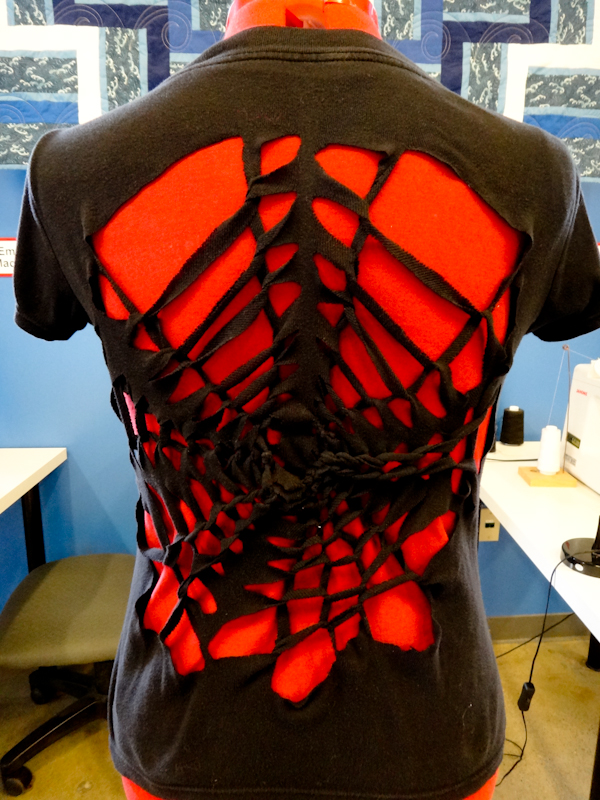Table of Content
This means gradients and multicolor limitations exist with this method. The limitations of dye sublimation printing aside, this type of t-shirt printing work really well on light-colored fabrics that are made of polyester. The process is self-weeding so you won’t have to worry about trimming away excess material that does not contain ink. To make a shirt, try buying a shirt pattern or downloading an online pattern for free. Alternatively, use an old shirt if it's the exact size and style you want the new shirt to be. Additionally, choose a fabric that's soft and stretchy, like jersey.
Any paper around the design will be visible on your shirt, so make sure to cut your design as carefully and precisely as possible. Choose a shirt making company that meets your needs. There are many manufacturers who produce custom shirts. Check out some different manufacturers’ websites to see what they offer and choose one that meets your design needs and budget.
Steps to Align Objects in CorelDraw
Pin the corners of your pattern first, and then pin along the edges.If you prefer, you can weigh the fabric and then use chalk to draw an outline on your fabric. Yes, it literally means you print directly on the shirt. This process uses inkjets to print directly onto T-shirts. You get a beautiful, full-color, high-resolution image right on your shirt.

Place waterproof tape around the edges of the underside of the screen. It’s best to sketch your ideas out before putting them on your t-shirt. Try out several different designs and color combinations. Make sure the image is balanced and cohesive. Make sure to follow the patch or decal instructions for securing it to the shirt. You may need to use a specific heat setting or hold the iron over the patch or decal for a specific amount of time to attach it.
Related Articles
Try to pin accurately so you have good measurements. Making a t-shirt for yourself is a fun project, and you will learn a lot of new things while you hop on this journey of “how to make personalized shirts at home. Start aligning the raw edges of the binding strip with the neck hole. Measure and cut a strip of fabric at 4cm wide and 45cm long. Ensure you adjust your cutting in terms of length, stretch, and width-wise.

Make sure to remove the pins as you sew and do not sew over them. Make sure that each of the pins goes all the way through the pattern piece and fabric layers. Most patterns call for the fabric to be folded before you cut it and the pattern will go along the fold. Lay your fabric out on a flat, clean surface.
Customization styles
Among other things, below is another short list of attributes to keep in mind when evaluating methods. Before you start printing t-shirts at home or commercially you need to decide which type of printing method you will use. One of the great things about clothing printing is how easily it is to spruce up a cloth handbag or add a fresh look to a plain t-shirt.
Ensure that the hottest part of the iron reaches every part of the design. You don't need to have a fancy studio to design and print your own cool t-shirts. Fold the sides of the shirt under the cardboard.
This type of commercial machine allows for quick turnaround for products out of large shops or smaller home-based startups. Jennifer Marx is a designer, an enthusiastic crafter, a lifelong teacher, and a proud overcomer of a variety of life's challenges. In her spare time she loves to play D&D and video games, garden, sew 16th c.

Neckline, insert the pins via a seam joining the back neckline to the collar. The pins you insert on the shoulders, sides, and bottom hem don’t need to be precise since their primary purpose is to hold the shirt. Once you collect all these required supplies, the next step is to choose an ideal fabric for making a t-shirt. T-shirts are an essential garment that has found a place in every man and women’s heart and closet.
Always protect your eyes, clothing, and any open cuts from coming into contact with bleach. Place a piece of cardboard inside the t-shirt. Doing this separates the front and back so the ink doesn’t bleed through to the other side. Drag the ink back up across the flooded screen over the design. Let the screen soak in a thin layer of water for about two minutes. Then rinse any excess emulsion off with a hose or in the shower.
This machine and process may be for you because it’s small, there is less mess, and the threads are cheap. You can create a custom T-shirt in no time, depending on the design’s size. You don't have to be a designer to create great looking shirts. Pick from one of our professionally designed templates to get you started.

No comments:
Post a Comment